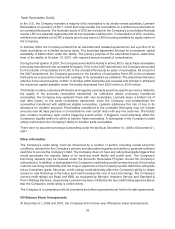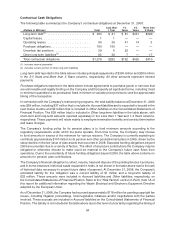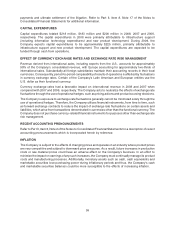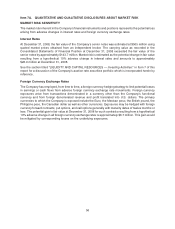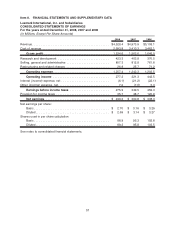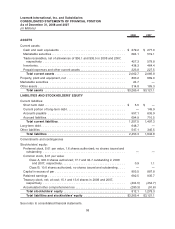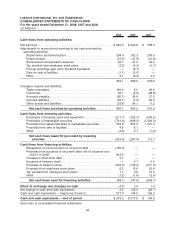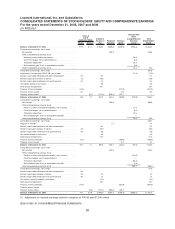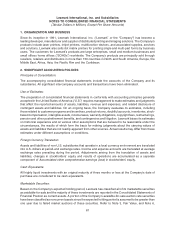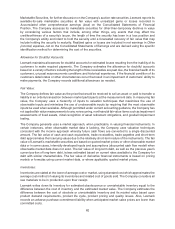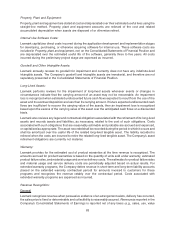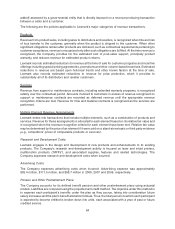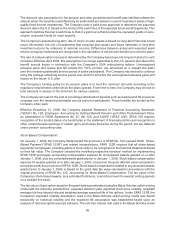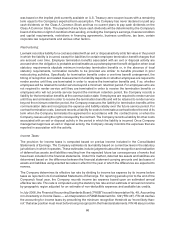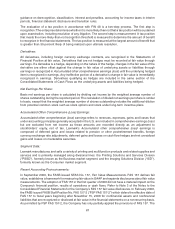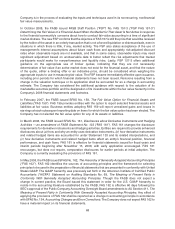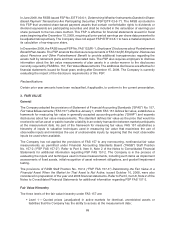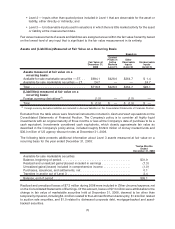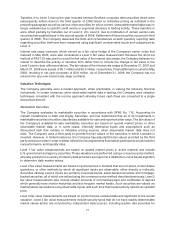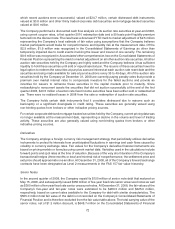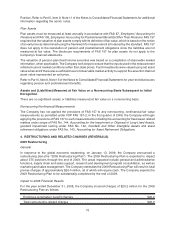Lexmark 2008 Annual Report Download - page 69
Download and view the complete annual report
Please find page 69 of the 2008 Lexmark annual report below. You can navigate through the pages in the report by either clicking on the pages listed below, or by using the keyword search tool below to find specific information within the annual report.
Property, Plant and Equipment:
Property, plant and equipment are stated at cost and depreciated over their estimated useful lives using the
straight-line method. Property, plant and equipment accounts are relieved of the cost and related
accumulated depreciation when assets are disposed of or otherwise retired.
Internal Use Software Costs:
Lexmark capitalizes direct costs incurred during the application development and implementation stages
for developing, purchasing, or otherwise acquiring software for internal use. These software costs are
included in Property, plant and equipment, net, on the Consolidated Statements of Financial Position and
are depreciated over the estimated useful life of the software, generally three to five years. All costs
incurred during the preliminary project stage are expensed as incurred.
Goodwill and Other Intangible Assets:
Lexmark annually reviews its goodwill for impairment and currently does not have any indefinite-lived
intangible assets. The Company’s goodwill and intangible assets are immaterial, and therefore are not
separately presented in the Consolidated Statements of Financial Position.
Long-Lived Assets:
Lexmark performs reviews for the impairment of long-lived assets whenever events or changes in
circumstances indicate that the carrying amount of an asset may not be recoverable. An impairment
loss is recognized when estimated undiscounted future cash flows expected to result from the use of the
asset and its eventual disposition are less than its carrying amount. If future expected undiscounted cash
flows are insufficient to recover the carrying value of the assets, then an impairment loss is recognized
based upon the excess of the carrying value of the asset over the anticipated cash flows on a discounted
basis.
Lexmark also reviews any legal and contractual obligations associated with the retirement of its long-lived
assets and records assets and liabilities, as necessary, related to the cost of such obligations. Costs
associated with such obligations that are reasonably estimable and probable are accrued and expensed,
or capitalized as appropriate. The asset recorded shall be recorded during the period in which it occurs and
shall be amortized over the useful life of the related long-lived tangible asset. The liability recorded is
relieved when the costs are incurred to retire the related long-lived tangible asset. The Company’s asset
retirement obligations are currently not material.
Warranty:
Lexmark provides for the estimated cost of product warranties at the time revenue is recognized. The
amounts accrued for product warranties is based on the quantity of units sold under warranty, estimated
product failure rates, and material usage and service delivery costs. The estimates for product failure rates
and material usage and service delivery costs are periodically adjusted based on actual results. For
extended warranty programs, the Company defers revenue in short-term and long-term liability accounts
(based on the extended warranty contractual period) for amounts invoiced to customers for these
programs and recognizes the revenue ratably over the contractual period. Costs associated with
extended warranty programs are expensed as incurred.
Revenue Recognition:
General
Lexmark recognizes revenue when persuasive evidence of an arrangement exists, delivery has occurred,
the sales price is fixed or determinable and collectibility is reasonably assured. Revenue as reported in the
Company’s Consolidated Statements of Earnings is reported net of any taxes (e.g., sales, use, value
63


